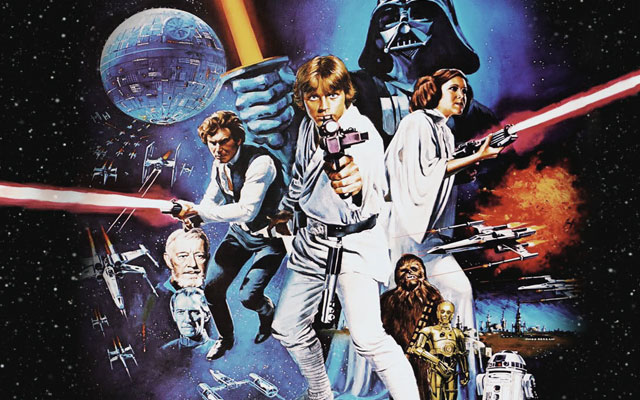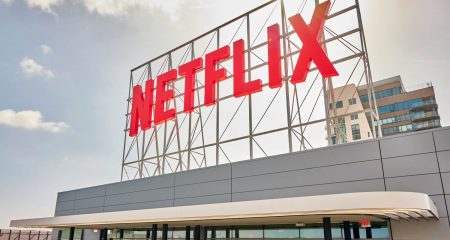 Ah, the good old days. Those lovely summer afternoons where one could scoff at George Lucas and the merchandising monstrosity he turned Star Wars into.
Ah, the good old days. Those lovely summer afternoons where one could scoff at George Lucas and the merchandising monstrosity he turned Star Wars into.
I might as well be blunt about this: much as I like the Star Wars films and world, it also makes me drop my head. Far be it from me to tell adults how to spend their money, but how many times can a rational person own an effigy of a Stormtrooper or Confucian pastiche Yoda? How often will they spend money time and again on something in essence hasn’t changed? It just shows a real lack of imagination.
But that is all beside the point of today’s column, yet it begged clarifying. See, when the press release of a “global Star Wars toy unboxing” event arrived in my mailbox, bile rose instantly. How stupid. How infantile. How apt a demonstration that so-called geek or nerd culture is the pinnacle of consumerism’s worst side. Even those people who usually sneer at my suggestions that they are mentally regressing themselves — even they agreed that this event was stupid.
Well, I was wrong. So very wrong.
The derision still stands. All of this merchandising madness, particularly among adults, speaks terrible things for our species. What would Homo naledi think?
But, boy, what a coup! The unboxing was an 18-hour live event streamed on YouTube. It swooped to 18 cities across 12 countries, each revealing a new toy for the upcoming Star Wars movie. The film is only set to be released in December, but you can buy the toys now (think of that next time you moan about early Christmas decorations). Live presenters, featurettes on other Star Wars products, recaps of earlier launches and practically every Star Wars movie or show trailer, kept the party going between unboxings.
I had no intention to watch, but found myself needing some background noise while beavering away. The live stream serendipitously presented itself as an option and I figured it must be worth a quick look. Dumb it may be, but history the unboxing marathon is.
I dropped in as the Brazilians got their turn to reveal a few new figurines, watching for an hour until the end of the New York launch and the BB-8 robot, possibly the most wanted toy this year.
Along the way, I learned all Disney wanted me to know, bar whatever the upcoming launches still had tucked away. I could tell you a bit about what to expect from Star Wars merchandise — and I don’t even care.
That is marketing on a new level. But the stroke of genius was taking this to YouTube. Many of the launches incorporated existing YouTube stars, no doubt adding a large number of viewers. The launches varied in quality, but I doubt any cost as much as a larger, more exaggerated launches that products often get. YouTube ensured this was broadcast to maximum effect — all without Disney spending a cent on traditional broadcast media.

There are no clear numbers on how many people watched the stream, but it doesn’t really matter. The unboxing got social media buzzing and created a horde of official videos on YouTube that can be used time and again. It’s a marketing nuke: one big explosion and an endless supply of radiation.
No doubt some marketing gurus are already punting the idea to clients. They probably conveniently ignore the fact that this worked because it is Star Wars. Even in Lucas’s hands, Star Wars merchandise was a US$20bn business and he was in hindsight quite conservative. The new Disney-led Star Wars is making the Lucas era look like a cottage industry — over 90 toys will come from Hasbro alone for the new movie. Very few brands could even come close.
Still, what sounded like a dumb idea was a moment of brilliance. The unboxing grabbed the reigns of several Internet thoroughbreds and charged into a new marketing era. Doing product launches for every major region would have been expensive and reserved for the best products. When computer manufacturers launch new laptops, you don’t see the low-end stuff lying around.
But with this Disney could really cast its net wide, all while spending very little. So, unlike dedicated launches, more products got airtime, and unlike TV ads, going online was not only a lot cheaper but also resonated through sharing and repeat viewing.
I’d be curious to see what else follows this model. It’s another point towards the internet as technology’s most disruptive spawn. Just like cabbies brood over Uber, some TV executives realise they have just been sidelined globally — and possibly for less money than a single Superbowl ad.
Well played, Disney, well played.
- James Francis is a freelance writer whose work has appeared in several local and international publications
- Subscribe to TechCentral’s free daily newsletter




